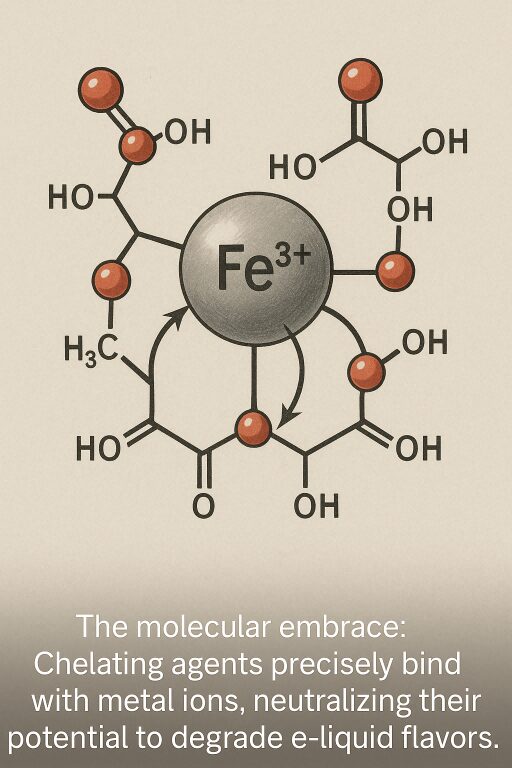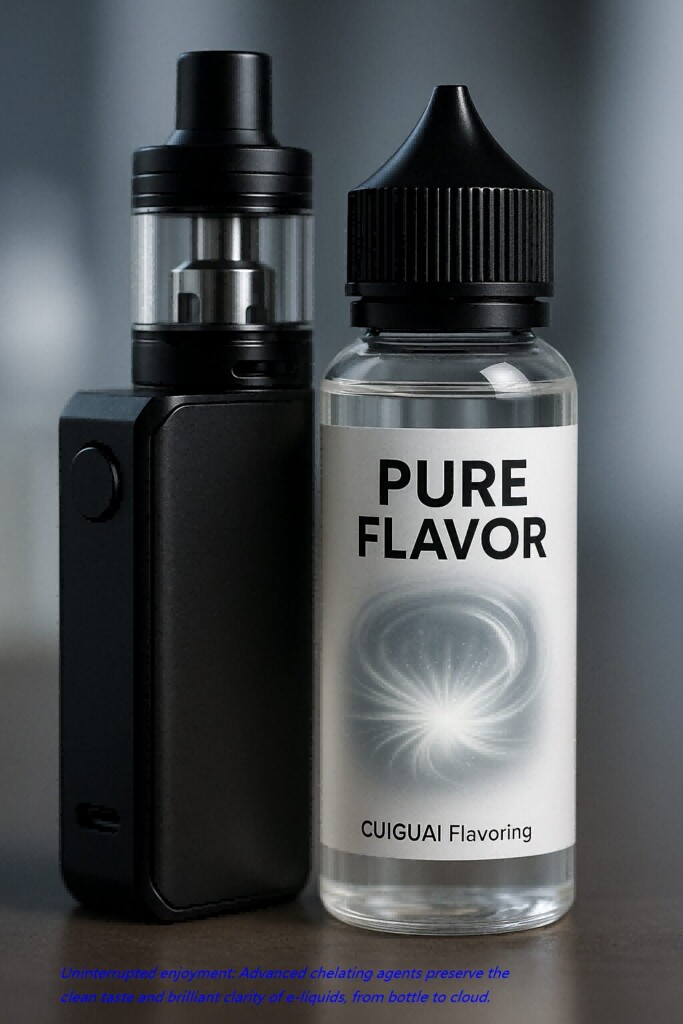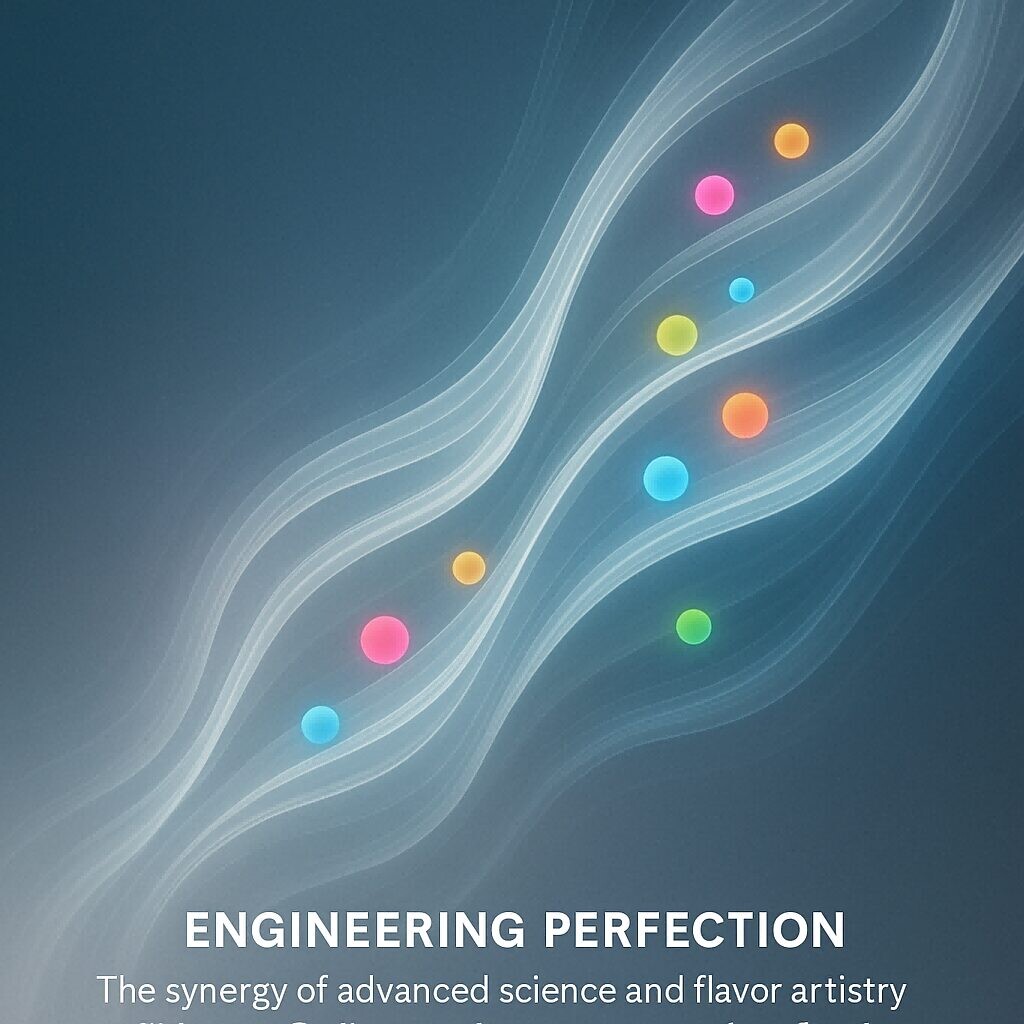The pursuit of a perfect vaping experience extends far beyond the initial selection of flavors and nicotine strength. For manufacturers, a critical, often unseen, challenge lies in maintaining the sensory purity of their e-liquids over time and throughout the vaping process. One of the most insidious threats to flavor integrity comes from unintended interactions with trace metal ions, which can lead to undesirable metal-induced off-notes. This is where the sophisticated science of chelating agents comes into play. These remarkable compounds act as silent guardians, binding to metal ions and neutralizing their detrimental effects, thereby playing a pivotal role in preventing metal off-note development and ensuring a consistently smooth, clean, and enjoyable vape. This blog post will delve into the technical mechanisms, strategic importance, and innovative application of chelating agents in crafting superior e-liquid formulations.

Metal Ion Protection and Flavor Preservation
Trace amounts of metal ions can inadvertently find their way into e-liquids from various sources:
Once present, these metal ions are far from inert. They act as catalysts for a range of undesirable chemical reactions:
The insidious nature of metal-induced off-notes is that they can develop slowly over the product’s shelf life or become pronounced during the act of vaping itself, diminishing the consumer’s experience and eroding brand loyalty.
Chelating agents (from the Greek word “chele,” meaning “claw”) are organic compounds that form stable, water-soluble complexes with metal ions. They achieve this by wrapping around the metal ion, binding to it at multiple points, effectively sequestering or “trapping” it. This process renders the metal ion inactive, preventing it from participating in detrimental chemical reactions.
While many chelating agents exist, selection for e-liquid applications requires careful consideration of safety, flavor compatibility, and effectiveness. Common examples from the food industry that hold promise for adaptation or inspire similar mechanisms include:
For e-liquids, the ideal chelating agent is highly effective at trace levels, non-toxic upon inhalation, compatible with existing e-liquid formulations, and imparts no discernible taste or aroma of its own.

Molecular Embrace: Citric Acid and Iron Ions
Integrating chelating agents effectively into e-liquid formulations requires precise scientific understanding and rigorous testing.
The first step is to identify which specific metal ions are most prevalent in your raw materials or are likely to be leached from equipment/devices. This often involves elemental analysis techniques like Inductively Coupled Plasma Mass Spectrometry (ICP-MS) on both raw materials and finished products (pre- and post-aging, and even analysis of vapor condensate).
Based on the identified metals and desired product characteristics (e.g., clean label, specific pH range), the most suitable chelating agent can be selected. Factors to consider include:
Chelating agents are typically effective at very low concentrations (parts per million or even parts per billion). Determining the precise optimal dosage is crucial to maximize efficacy without introducing any unintended effects. Overdosing is unnecessary and potentially problematic.
The complexity of preventing metal off-notes necessitates a flavor partner with deep scientific expertise, advanced analytical capabilities, and a commitment to ingredient purity.
CUIGUAI Flavoring stands at the forefront of e-liquid innovation, offering specialized solutions, including the strategic incorporation of advanced chelating agents into their e-liquid specific flavors. Their dedicated R&D team meticulously researches and selects food-grade chelators that are optimally effective at sequestering trace metal ions without impacting the integrity of their premium aroma profiles. By integrating these invisible guardians, CUIGUAI Flavoring ensures the exceptional flavor stability of their electronic liquid essences, effectively preventing metal off-note development and guaranteeing a consistently clean, smooth, and authentic vape flavor experience throughout the product’s shelf life and during every puff. For manufacturers committed to delivering the highest quality and most reliable sensory experience, CUIGUAI Flavoring provides the technical expertise and ingredient solutions to safeguard product purity.

Pure Flavor E-Cigarettes and Liquid Bottles
The role of chelating agents in preventing metal off-notes is a testament to the increasing sophistication of e-liquid formulation. As consumers become more discerning and the market demands higher standards of quality and consistency, such technical innovations will become increasingly non-negotiable.
Beyond just preventing off-notes, the precise control offered by chelating agents contributes to:
The integration of chelating agents is not just about addressing a problem; it’s about proactively ensuring the highest standard of vape flavor purity and stability. It marks a significant step forward in engineering truly premium e-liquid products that stand the test of time and satisfy the most discerning palates.

Perfect Engineering: The Harmonious Flow of Deliciousness
Keywords: chelator vape flavor, metal off-note prevention
Author: R&D Team, CUIGUAI Flavoring
Published by: Guangdong Unique Flavor Co., Ltd.
Last Updated: Jul 23, 2025
The business scope includes licensed projects: food additive production. General projects: sales of food additives; manufacturing of daily chemical products; sales of daily chemical products; technical services, technology development, technical consultation, technology exchange, technology transfer, and technology promotion; biological feed research and development; industrial enzyme preparation research and development; cosmetics wholesale; domestic trading agency; sales of sanitary products and disposable medical supplies; retail of kitchenware, sanitary ware and daily sundries; sales of daily necessities; food sales (only sales of pre-packaged food).
Copyright ©Guangdong Unique Flavor Co., Ltd.All Rights Reserved. Privacy Policy